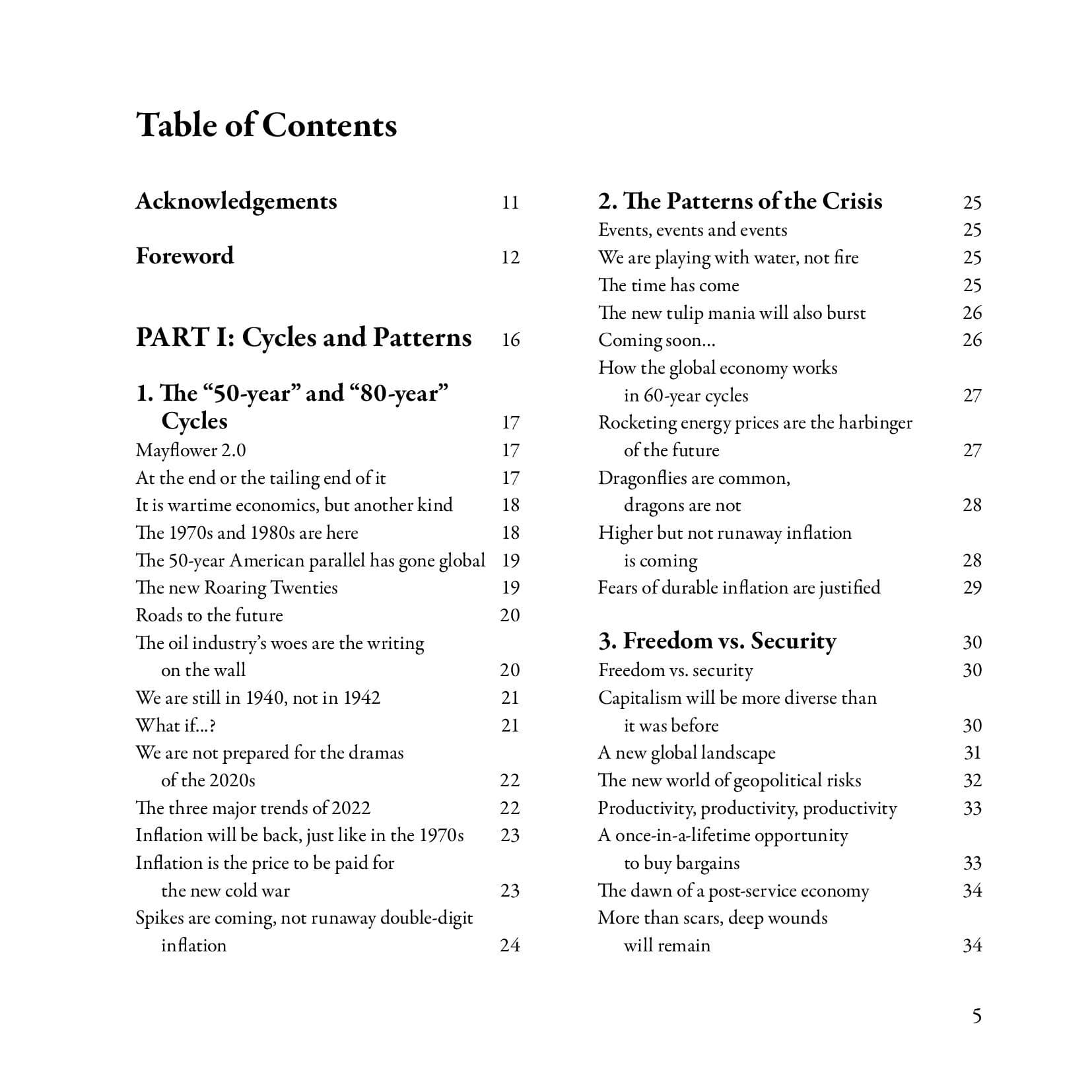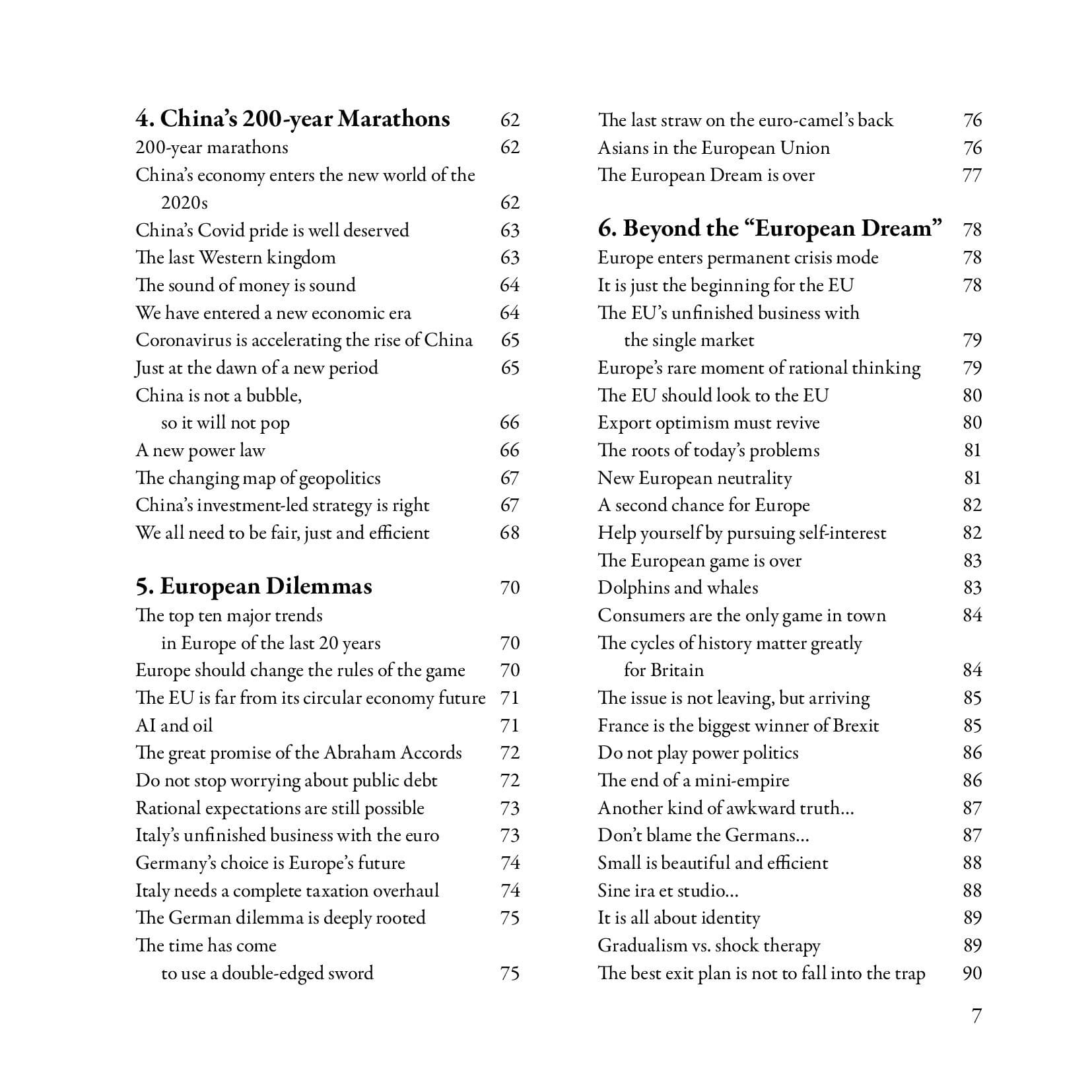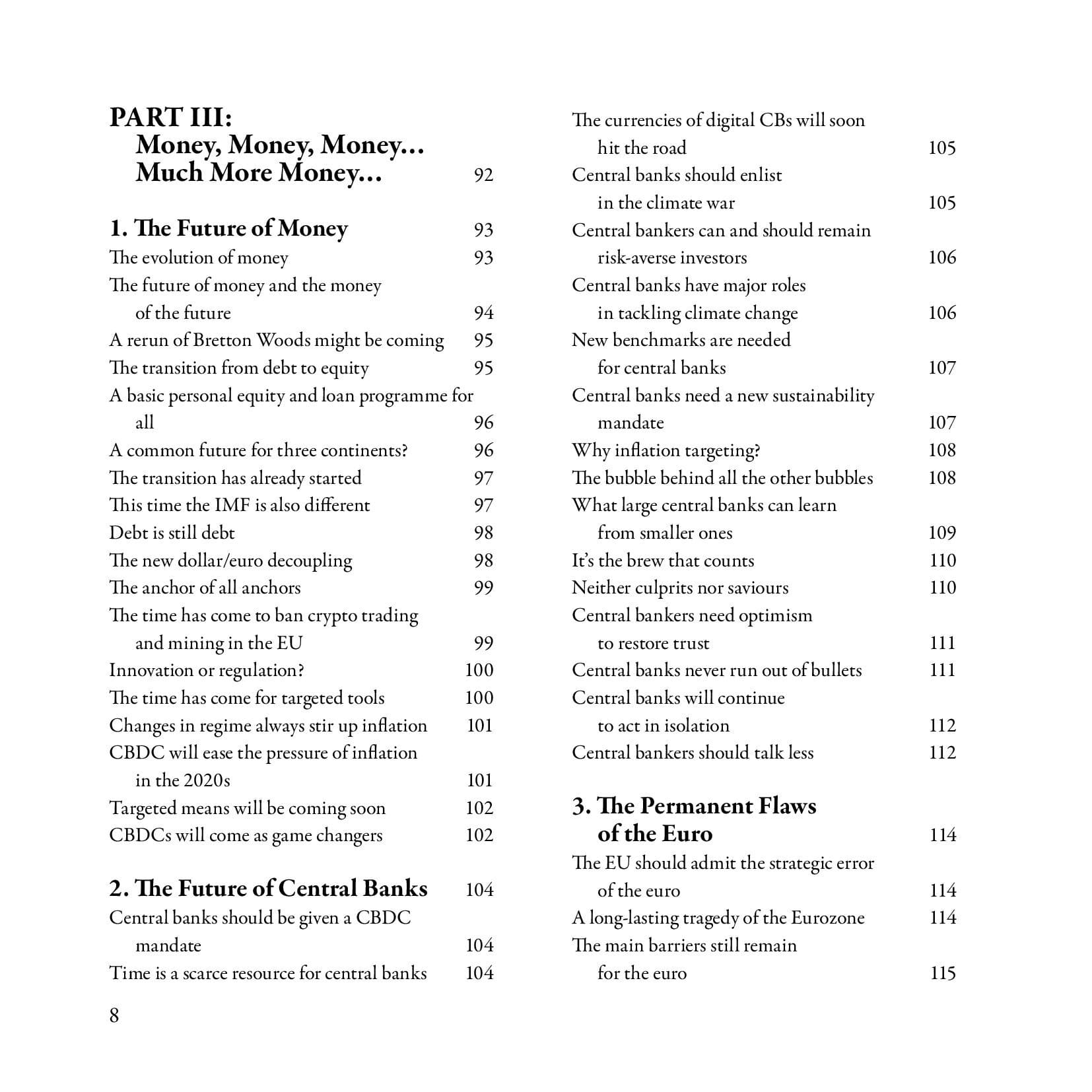On the Edge of Times
Original price was: 6 999 Ft.5 699 FtCurrent price is: 5 699 Ft.
The author shares his insights in response to articles published in globally renowned journals by the top economists, scientific experts and opinion leaders of our time. They point the way towards not only long-term sustainable and viable systems, but also a completely new way of thinking. He invites the reader to regard the world economy as a complex living system where cycles, patterns and fractals work together and the rules of the Quantum World are the Power Laws. The author challenges all the extremes of liberal economic thinking in order to accelerate the transition to a sustainable global economy based on new sustainable economics. All his arguments can be summarized in the title of the book: we live on the edge of times, where the “50-year” and “80-year” cycles tend to shape the 2020s, our time.
György Matolcsy has been serving as the Governor of Magyar Nemzeti Bank, the central bank of Hungary, since 2013. He is also a member of the Fiscal Council of Hungary. Prior to that, he was Minister of National Economy between 2010-2013 and Minister of Economic Affairs between 2000-2002. Between 2002-2010 he was director of the Institute for Growth and of the Privatisation Research Institute from 1995 to 2000. He was a member of the Board of Governors at the European Bank for Reconstruction and Development (EBRD) representing the Hungarian Government between 1991 and 1993. In 1990, he served as political state secretary and the personal economic advisor to Prime Minister József Antall. He began his career in the Ministry of Finance in 1978, then he joined the Financial Research Institute as scientific researcher in 1985. As the economic and finance minister of the Orbán government, he was instrumental to the turnaround of the Hungarian economy by introducing a tax reform and completing the most successful fiscal consolidation within the EU. As the governor of MNB, he solved the credit crunch of the financial system and also swept out the CHF denominated FX loans of Hungarian households. He graduated at Karl Marx University of Economics in 1977 and obtained his Doctorate degree in 1984. György Matolcsy is a frequent lecturer at top foreign and Hungarian universities. He is honorary member of Fudan Development Institute (FDDI) of Fudan University and of the International Advisory Board of Shanghai Forum, and he is honorary doctor at the University of Debrecen and the University of Kaposvár. György Matolcsy is the author of several hundred articles, studies and books. His latest book, Economic Balance and Growth was published in 2021.
Tartalomjegyzék
Table of Contents
Acknowledgements 11
Foreword 12
PART I: Cycles and Patterns 16
1. The “50-year” and “80-year” Cycles 17
Mayflower 2.0 17
At the end or the tailing end of it 17
It is wartime economics, but another kind 18
The 1970s and 1980s are here 18
The 50‑year American parallel has gone global 19
The new Roaring Twenties 19
Roads to the future 20
The oil industry’s woes are the writing on the wall 20
We are still in 1940, not in 1942 21
What if…? 21
We are not prepared for the dramas of the 2020s 22
The three major trends of 2022 22
Inflation will be back, just like in the 1970s 23
Inflation is the price to be paid for the new cold war 23
Spikes are coming, not runaway double‑digit
inflation 24
2. The Patterns of the Crisis 25
Events, events and events 25
We are playing with water, not fire 25
The time has come 25
The new tulip mania will also burst 26
Coming soon… 26
How the global economy works in 60‑year cycles 27
Rocketing energy prices are the harbinger of the future 27
Dragonflies are common, dragons are not 28
Higher but not runaway inflation is coming 28
Fears of durable inflation are justified 29
3. Freedom vs. Security 30
Freedom vs. security 30
Capitalism will be more diverse than it was before 30
A new global landscape 31
The new world of geopolitical risks 32
Productivity, productivity, productivity 33
A once‑in‑a‑lifetime opportunity to buy bargains 33
The dawn of a post‑service economy 34
More than scars, deep wounds will remain 34
4. Government and Growth 36
The third wave 36
Reducing public debt by unleashing growth potential 36
A new cycle has just begun 37
Survivors and “ready‑to‑die” corporations 37
More unorthodox measures are needed, not fewer 38
Yes, all key measurements are plain wrong 38
The decade of rare success stories is coming 39
We are on the Japanese path 39
Sometimes forecasting errors might be for the good 40
These are still the old bubbles 40
There are many coins with two sides 41
PART II: G2 vs. G-2 42
1. Beyond Western Exceptionalism 43
Western exceptionalism is over 43
Covid is the first wake‑up call for the West 43
What will the West do next? 43
Western flaws have been exposed 44
When two archetypes meet 44
The future is not bipolar, it is multipolar 45
History is full of unintended side effects 45
Don’t fix what isn’t broken 46
Political cycles and innovation cycles intertwine 46
Two‑track recovery: two types of government 47
2. Cold War 2.0 48
The proposal for a new cold war 48
This is a new yin/yang world 48
We need a new G2 world order 49
No one will win Cold War 2.0 49
Some politicians misunderstand their times 50
Appearances can be deceptive 50
We have entered the era of a war economy of a sort 51
Too big to pick a side 51
Hopefully more sophisticated warfare, not a war 52
The end of Western globalization 52
3. Roman Empire 2.0 54
Trajan in AD 100 54
Waiting for Hadrian 54
The Biden‑Nixon parallel is right 55
Live and let live 55
Globalists have already lost at home 56
It is only the harbinger of the 2020s 56
We can see only one failing superpower 57
Economic thinking will stop Biden’s experiment 57
Even America cannot run supersized deficits for ever 58
Global recessions no longer come out of the blue 58
The Atlantic tectonic plates are shifting 59
It is the same, but different 59
Is this a sort of Japanification in the US? 60
PART III:
Money, Money, Money… Much More Money… 92
1. The Future of Money 93
The evolution of money 93
The future of money and the money of the future 94
A rerun of Bretton Woods might be coming 95
The transition from debt to equity 95
A basic personal equity and loan programme for all 96
A common future for three continents? 96
The transition has already started 97
This time the IMF is also different 97
Debt is still debt 98
The new dollar/euro decoupling 98
The anchor of all anchors 99
The time has come to ban crypto trading and mining in the EU 99
Innovation or regulation? 100
The time has come for targeted tools 100
Changes in regime always stir up inflation 101
CBDC will ease the pressure of inflation in the 2020s 101
Targeted means will be coming soon 102
CBDCs will come as game changers 102
2. The Future of Central Banks 104
Central banks should be given a CBDC mandate 104
Time is a scarce resource for central banks 104
The currencies of digital CBs will soon hit the road 105
Central banks should enlist in the climate war 105
Central bankers can and should remain risk‑averse investors 106
Central banks have major roles in tackling climate change 106
New benchmarks are needed for central banks 107
Central banks need a new sustainability mandate 107
Why inflation targeting? 108
The bubble behind all the other bubbles 108
What large central banks can learn from smaller ones 109
It’s the brew that counts 110
Neither culprits nor saviours 110
Central bankers need optimism to restore trust 111
Central banks never run out of bullets 111
Central banks will continue to act in isolation 112
Central bankers should talk less 112
3. The Permanent Flaws
of the Euro 114
The EU should admit the strategic error of the euro 114
A long‑lasting tragedy of the Eurozone 114
The main barriers still remain for the euro 115
Another sort of U‑turn is needed 115
It is not the EU’s rescue fund that matters 116
It is not only ethical, but strategic as well 116
Beware of Greeks bearing gifts 117
Liberals should return to pragmatism 117
Negative rate policies are not abnormal for the euro 118
Ending a period of financial nonsense 118
The ECB should embrace a multi‑faceted mandate 119
We need different types of digital euro 119
CBDC: Europe should catch up with Asia 120
The American dilemma is global 120
Surprise, surprise, surprise 121
Many more shocks to come 121
A wartime‑targeted stimulus programme is needed 122
Concerted efforts are needed 122
4. The Rise of the Budget 124
The rise of the budget 124
Both sides of the same coin 124
The case for substantial fiscal reserves 124
Neither institutions nor networks 125
A mixture of panic and a reasonable response 125
The Minsky Moment is coming 125
We should go an extra mile 126
We are heading for another kind of banking system 126
PART IV:
Towards Sustainability… 128
1. The New Age of Discoveries 129
We live in the age of discoveries 129
There is life beyond GDP 130
We should go an extra mile with GDP 131
Learn from the 2020 GDP data 131
Uncertainty fuels creativity 132
Fragility is the essence of life 132
Demography still plays a major role in the future 133
A new deal for all of us 134
Politicians are afraid of the tech challenge 135
The transition to hybrid systems 135
Music has become part of the data‑driven economy 136
It is digital transformation at top speed 136
2. Prosperity 4 All 138
Prosperity 4 all 138
Why the state is bigger and more active than ever 138
National competitiveness means a strong industrial base 139
Victory‑shaped recovery with a pinch of salt 140
Political economy is back 140
Systemic changes are needed 141
All’s well that ends well 141
We are already on the digital track 142
Regulation is needed, not central planning 142
Appearances can be deceptive 143
3. The Sustainable Social Environment 144
Completely new economic thinking is needed 144
We badly need a green and sustainable recovery 144
Environmental risks are much larger than climate risks 145
New hypes might use some “retro” policies 145
Post‑crisis recovery should focus on women 146
Weekly testing – simple as that 146
Lockdown plays Russian roulette with workers 147
The solution is in the middle 147
The unfolding new mantra 148
Wikipedia needs a complete overhaul 148
4. Restructuring via a Sustainability Path 150
Restructuring via a green and sustainable path 150
Transformational change is needed in green financing 151
The EU needs long‑term sustainable solutions 151
Taxation is part of the solution 152
The time has come for sustainability taxation 153
The gig economy should go for a tax reform 153
Pension funds need to change course 154
Farming will once again be a family affair 154
Long‑term quid pro quo for sustainability 155
Netflix and V4 155
Capital‑heavy business models are back 156
First impressions can be deceptive 156
Reference List 158
List of Illustrations 176
Index 177
További információk
| Szerző | György Matolcsy |
|---|---|
| Borító | Keménytábla, cérnafüzött |
| ISBN | 978-963-573-160-2 |
| Megjelenés ideje | 2022-09-21 |
| Oldalszám | 184 |
| Méret | 21,4×21,6 |
| Súly | 0,756kg |
| Nyelv | Angol |















